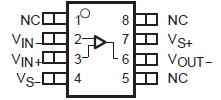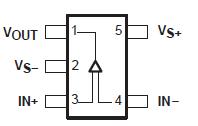THS3201: Features: Unity Gain Bandwidth: 1.8 GHz High Slew Rate: 10500 V/s Distortion at 100 MHz: (G = 10 V/V,RL = 100 , 2-VPP envelope) − IMD3: −80 dBc − OIP3: 41 dBmNoise Figure : 11 dB ...
floor Price/Ceiling Price
- Part Number:
- THS3201
- Supply Ability:
- 5000
Price Break
- Qty
- 1~5000
- Unit Price
- Negotiable
- Processing time
- 15 Days
SeekIC Buyer Protection PLUS - newly updated for 2013!
- Escrow Protection.
- Guaranteed refunds.
- Secure payments.
- Learn more >>
Month Sales
268 Transactions
Payment Methods
All payment methods are secure and covered by SeekIC Buyer Protection PLUS.

 THS3201 Data Sheet
THS3201 Data Sheet









